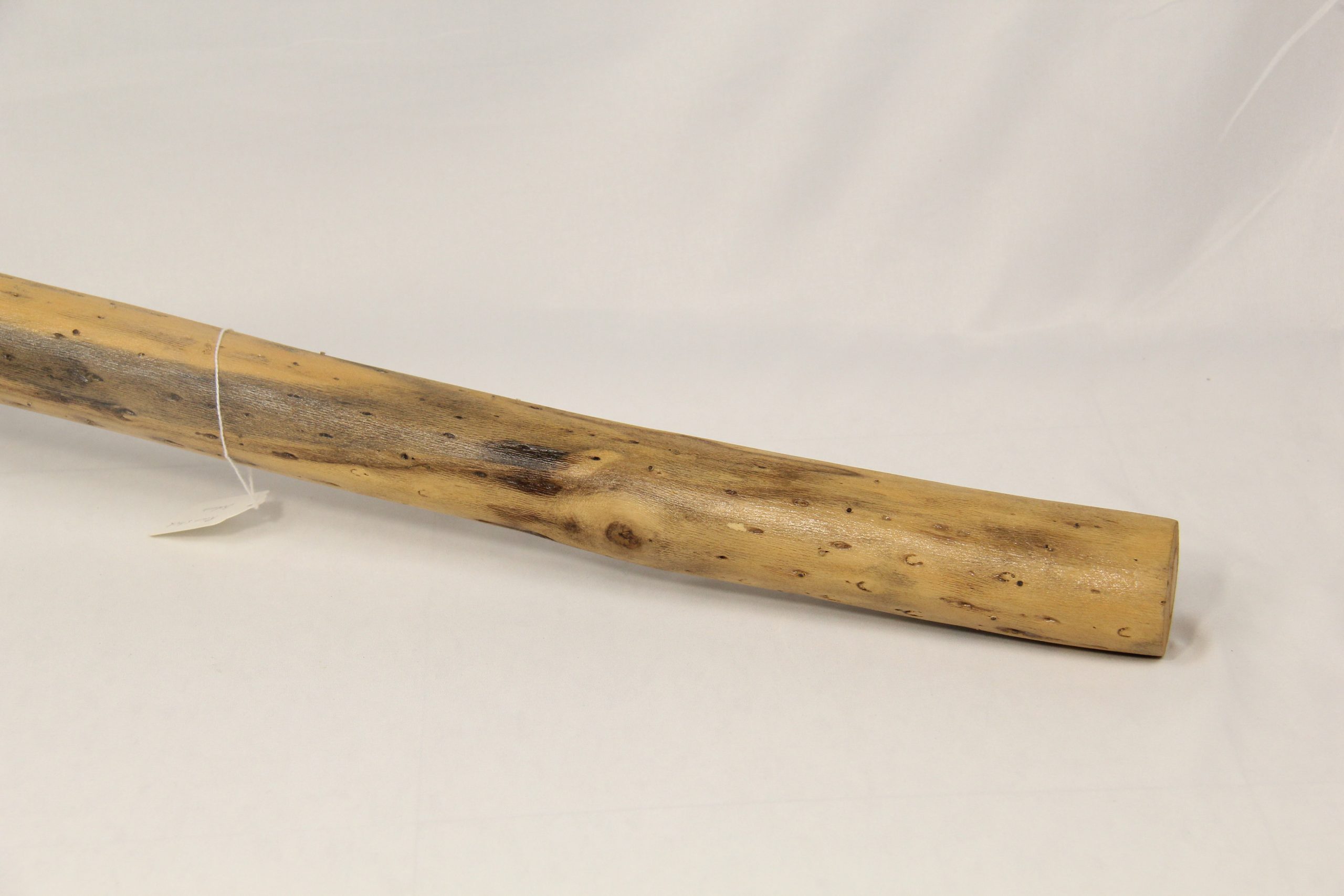Rain Stick
Rain sticks first appeared sometime during the mid-16th century, although as to where they were invented is a subject of debate. The general consensus is that rain sticks likely originated in Chile, where they were made by the Diaguta peoples from cacti tubes which had their needles inverted inwards and were filled with pebbles. There are similar instruments found in North America, Africa, and Asia. There is also speculation that the initial idea for the South American rain stick was developed when enslaved African peoples were brought to the continent and crossed paths with inhabitants of the upper Amazon and northern Chile.
This instrument is from Bolivia, where many rain sticks such as this one were made from bamboo or tree wood found in the Amazon rainforest. The creators of this rain stick were likely indigenous peoples from the Amazon basin or the surrounding region in eastern Bolivia near the rainforest and the materials required for it, as the Andes Mountains which dominate the west allow for far fewer trees.
Rain sticks are named as such due to being designed to mimic the sound of rainfall, with the pebbles inside tumbling all around. It has been part of many traditional religious rituals centered around prayer for rain in order to provide for crops. Sometimes they are wielded by a specific community member ordained with the power to forecast or potentially change weather.
Sources
- Laczko, Gina. “Rainstick.” Heard Museum, n.d. https://www.watereducation.org/sites/main/files/file-attachments/rainstick_origins.pdf?1433872831.
“Rainsticks and Folklore.” NASA Climate Kids. Earth Science Communications Team at NASA’s Jet Propulsion Laboratory, May 31, 2022. https://climatekids.nasa.gov/rainstick/#:~:text=They%20are%20traditionally%20made%20from,the%20deserts%20of%20northern%20Chile.




